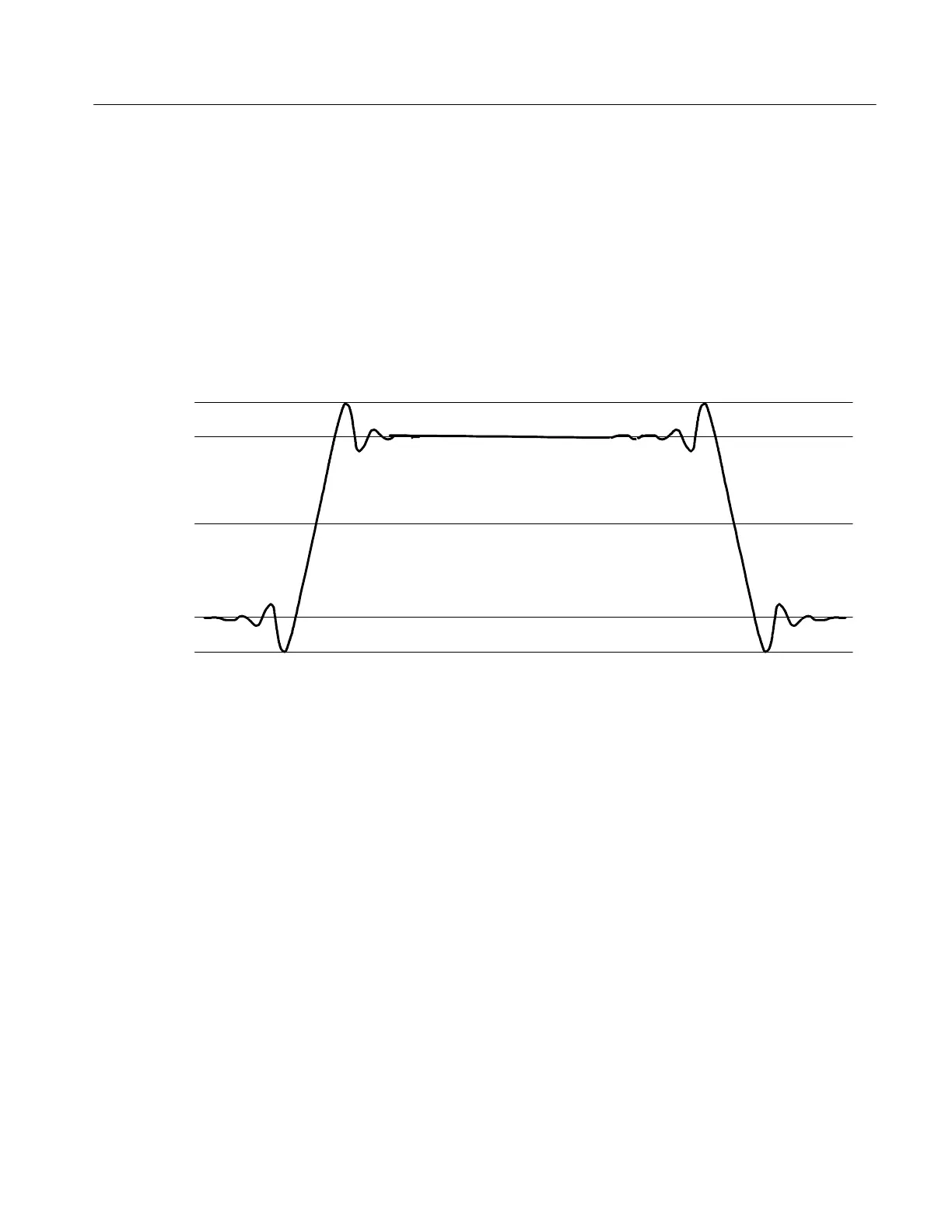Measuring Waveforms
TDS5000 Series User Manual
3-117
High/Low Method. The levels that the automatic measurement system derives as
the High (top) or Low (bottom) for a waveform influence the fidelity of
amplitude and aberration measurements. Select among the modes the
oscilloscope provides for determining these levels:
H Histogram sets the values statistically. It selects the most common value
either above or below the midpoint (depending on whether it is defining the
High or Low reference level). Since this statistical approach ignores short
term aberrations (overshoot, ringing, and so on), Histogram is the best
setting for examining pulses. See Figure 3--33.
High (Histogram)
Low (Histogram)
Low (Min/Max)
High (Min/Max)
Mid reference
Figure 3- 33: High/Low tracking methods
H Min-Max uses the highest and lowest values of the wave for m recor d. This
setting is best for examining wavefor ms that have no larg e, flat portions at a
common value, such as sine waves and triangle waves (almost any waveform
except for pulses). See Figure 3 --33.
Reference Levels Method. A second set of levels affect the fidelity of time-related
measurements. For example, the measurement system calculates rise time from
the waveform edge that transitions from the Low to the High reference levels.
The oscilloscope provides the following calculation methods (see Figure 3--34):
1. Relative Reference is calculated as a percentage of the High/Low range.
2. Absolute Reference is set by absolute values in user units.

